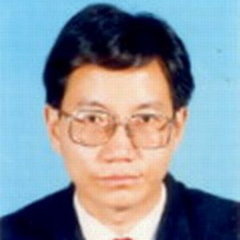10th Anniversary of Electronics: Recent Advances in Power Electronics
A special issue of Electronics (ISSN 2079-9292). This special issue belongs to the section "Power Electronics".
Deadline for manuscript submissions: closed (10 December 2021) | Viewed by 65526
Special Issue Editors
Interests: multilevel and multiphase converters; photovoltaic generation systems; power conditioning systems
Special Issues, Collections and Topics in MDPI journals
Interests: power electronics; power quality; grid monitoring; renewable energy systems; nonlinear control of power electronics and microgrids
Special Issues, Collections and Topics in MDPI journals
Interests: power system stability and control; grid integration and control of renewables; HVDC transmission; DC technologies; modelling and control of integrated energy systems; modelling of dynamic systems; multivariable control
Special Issues, Collections and Topics in MDPI journals
Interests: smart grids and electric vehicles; power economics and electricity markets; power system investment, planning and operation optimization; power system alarm processing, fault diagnosis and system restoration
Special Issues, Collections and Topics in MDPI journals
Special Issue Information
Dear Colleagues,
It has now been ten years since the first paper was published in Electronics back in 2011. It has been a rocky road with many highs and many lows, but we are extremely proud to have reached this very important milestone of the 10th anniversary of the journal. To celebrate this momentous occasion, a Special Issue is being prepared which invites both members of the Editorial Board and outstanding renowned authors, including past editors and authors, to submit their high-quality works on the topic of “Power Electronics”.
Topics of interest include but are not limited to:
- Power converters (topologies, their control, and reliability);
- Adjustable speed drives (AC and DC motor);
- Power quality and utility applications;
- Renewable energy applications (wind, photovoltaic, fuel-cell, and ESS);
- Electric vehicle applications;
- Smart grids;
- Batteries.
Prof. Dr. Gabriele Grandi
Prof. Dr. José Matas
Dr. Carlos E. Ugalde-Loo
Prof. Dr. Fushuan Wen
Guest Editors
Manuscript Submission Information
Manuscripts should be submitted online at www.mdpi.com by registering and logging in to this website. Once you are registered, click here to go to the submission form. Manuscripts can be submitted until the deadline. All submissions that pass pre-check are peer-reviewed. Accepted papers will be published continuously in the journal (as soon as accepted) and will be listed together on the special issue website. Research articles, review articles as well as short communications are invited. For planned papers, a title and short abstract (about 100 words) can be sent to the Editorial Office for announcement on this website.
Submitted manuscripts should not have been published previously, nor be under consideration for publication elsewhere (except conference proceedings papers). All manuscripts are thoroughly refereed through a single-blind peer-review process. A guide for authors and other relevant information for submission of manuscripts is available on the Instructions for Authors page. Electronics is an international peer-reviewed open access semimonthly journal published by MDPI.
Please visit the Instructions for Authors page before submitting a manuscript. The Article Processing Charge (APC) for publication in this open access journal is 2400 CHF (Swiss Francs). Submitted papers should be well formatted and use good English. Authors may use MDPI's English editing service prior to publication or during author revisions.








